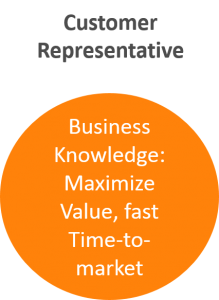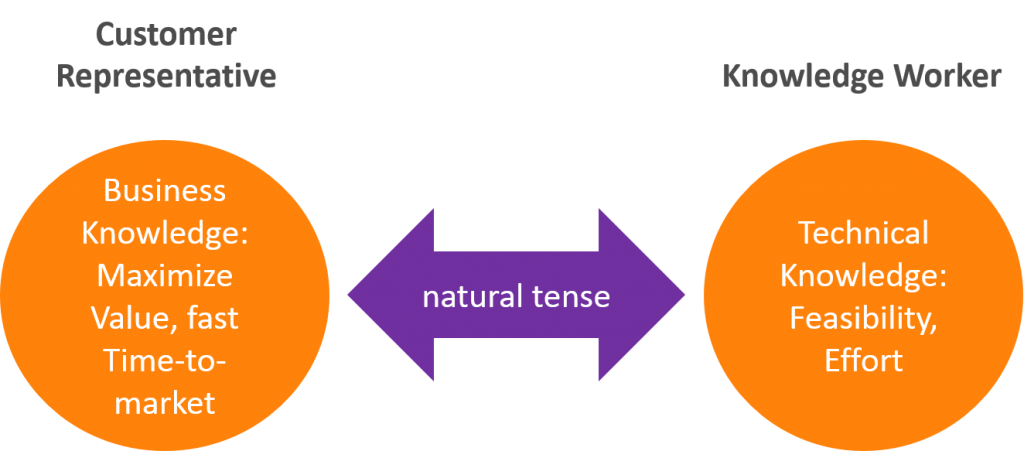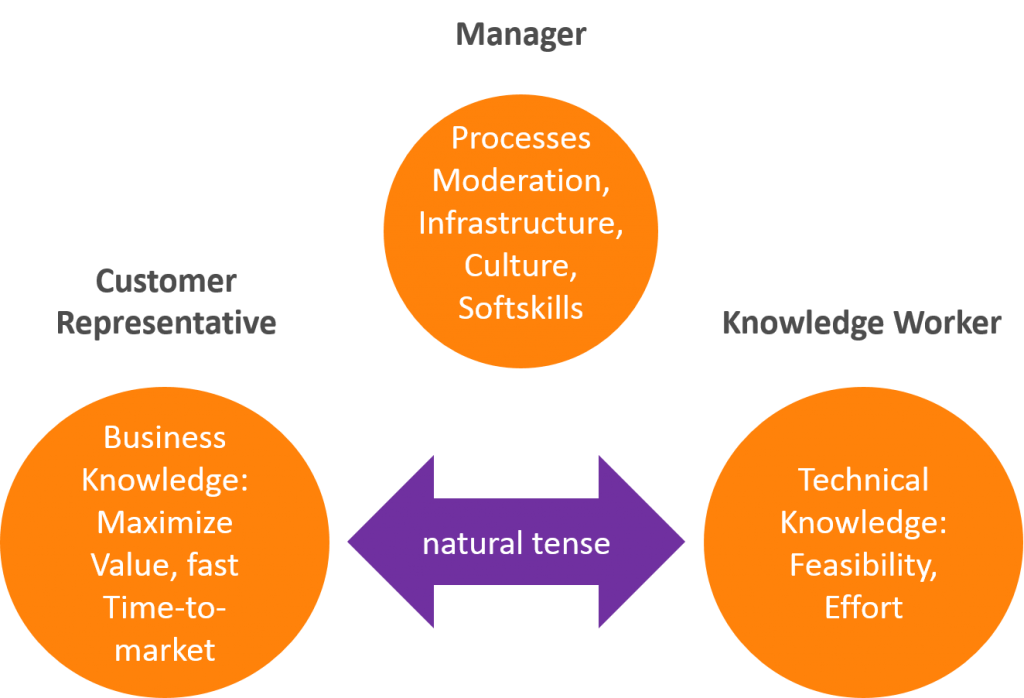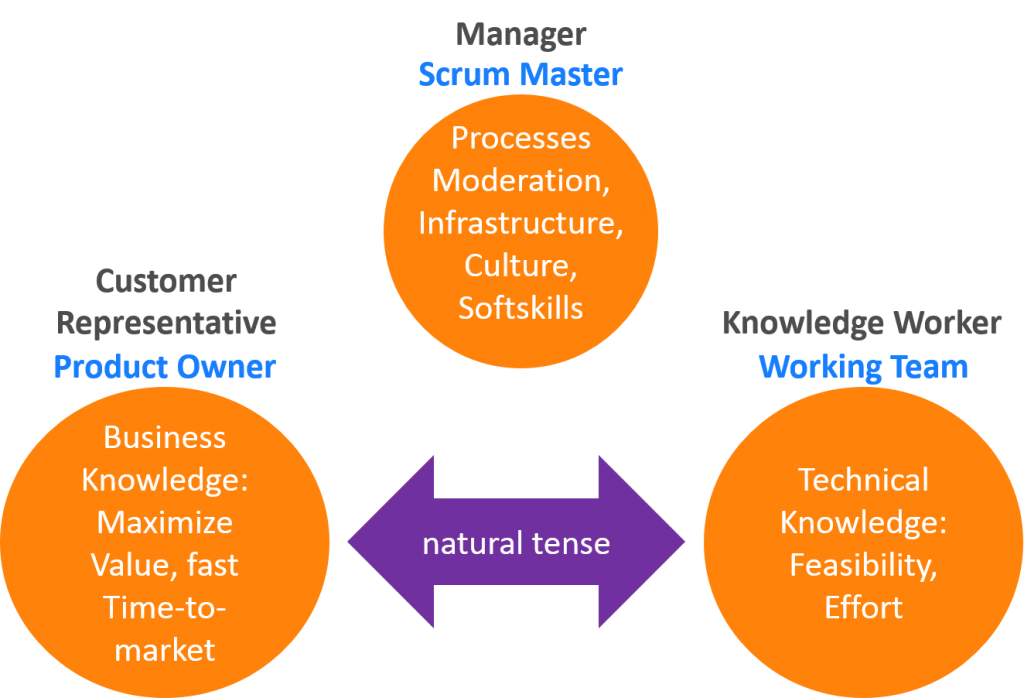Organizing Knowledge Work and Knowleddge Workers is a big challenge in today’s complex and fast-changing work environments. But what is Knowledge Work actually? According to Peter F. Drucker, the 20th century management pope, Knowledge Work is defined as “work where the worker has to think”. Thus, these are “workers who are not paid for their physical work and manual skills, but for the application of their acquired knowledge.” In other words:
“Knowledge workers are persons who understand their job better than their boss.” Peter F. Drucker
For this reason, a management system based on “Command & Control” cannot work here. The approach of self-organized teams seems to fit much better here. Let’s take a closer look …
Our organizational model of Knowledge Work
Let us look at what roles we have in Knowledge Work in business (BTW: Knowledge Work in science and research needs different roles):
Customer Representative: In any type of knowledge work in business, there is one customer, user, customer or at least one representative of that group. The customer representative usually knows quite well what they need and what is already available through competitors in the market. The goals of the customer representative for the product of the organization are therefore to maximize the customer or market benefits and to get the value-added functions quickly into the market.

Knowledge Worker: The knowledge workers (in contrast to the customer representative) have the knowledge about the feasibility of a function and about the effort to invest. At least they should be able to estimate roughly. In their work, they strive to create the product as good as possible. Since the customer representative wants to get as many functions as possible as quickly as possible, a conflict of interest arises between him and the knowledge workers creating a “natural tense”.

Manager: In order to bring the conflict of interest in a healthy balance and to keep it there, we introduce the role of a manager. He takes care of the adherence to the agreed (and possibly prescribed) processes, as well as their improvement. The manager also has the task of providing the knowledge workers with a suitable work environment, or to get the funds for it. He also takes care of removing obstacles and impediments of knowledge workers and the skill development of knowledge workers.

From the organizational model, the responsibilities of the roles according to Scrum and P4 framework can now be assigned:

Remarks:
- We often confuse the natural tense with artificial deadline pressure for lack of trust
- If the Product Owner is the supervisor of the working team, that is unfavorable because the team can say no bad.
- If the Product Owner does not have his own vision, but only listens to the customers, no real innovations will happen:
- Henry Ford: “When I asked people what they want, they said: Faster horses”
- Steve Jobs: he often questioned the solutions & products before showing them to the customer.
Conclusion
The organizational model of knowledge work explains why the “separation of powers” in an organization has clear advantages over the classic management model. A management team has the great advantage of not having one person “omnipotent” rule the organization.

One thought to “The Organizational Model of Knowledge Work”